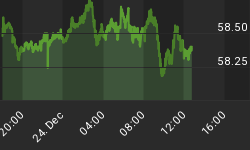Signs Of The Times:
On November 5, Times On Line titled a review as "Citigroup: Countdown to Disaster". It ran as follows:
"September 15: Citigroup is among US investment banks who tap the US Federal Reserve's $7.1 billion emergency fund.
October 1: Citigroup stuns investors with warning that the credit crunch could push third quarter profits down by 60%.
October 4: Citigroup offers Britain's own crisis-hit mortgage lender, Northern Rock, a $10 billion lifeline.
October 12: Chuck Prince announces a management shake-up a week after the bank reveals a $3.3 billion hit from the credit crunch.
October 15: The sub-prime crisis knocks 57 per cent off Citigroup's profits.
"Citigroup is one of three US banks to set up a "super fund" to help hedge funds with credit.
* * * *
Obviously, there are some ironies in the chain of events and it is best summed up in the notion that the $80 billion "Conduit" fund is being marketed by, amongst others, Citigroup that by the time it is raised will be desperately needed by itself. How much of it is not yet known.
Of course, this will provide a lot of interest as reports for the fourth quarter start to come out in February.
Stock Markets: A few weeks ago, we noted that in troubled times often the month of November could see a clearing of a number of the problems and that December could often be a good month for the general stock markets.
However, this should not imply that credit problems are about to go away. The pressures will continue and there is the possibility that smaller lending institutions could discover insolvency providing down side punctuation marks. Also, the progression of events in the second phase of liquidity concerns from sub-prime to traditional corporate debt has yet to conclude. On the latter, spreads, over treasuries, have widened beyond the levels reached with the initial panic. Moreover, on that move the yield for junk increased to 11.85%, now it is at 12.02%. The market has not only begun to seriously ration credit - but for those that can get it the cost is going up.
Another consideration is that the dollar index has been likely to set an important low with the next few weeks.
So the way we are looking at the market is with the understanding that it is in the early stages of a severe contraction and that the next 6 to 8 weeks could record some big swings guided by technical excesses.
Sector Comment: With some 5% down days some individual banks were worked over rather harshly. The BKX slumped from 121 in February to 90 last week from which it bounced to 100 yesterday morning. Now it's at 95. There is good support at 85 and at 30 on the weekly RSI. We have no urge to try to trade any of the rebounds.
Last week in bankingland, the positive story was about the "Master-Liquidity Enhancement Conduit" fund and in the base metal mining sector it was the $100 billion plus takeover of Rio Tinto by BHP. What with all the mergers and all, it seems that BHP is trying to turn itself into a mining-share index.
Usually, this sector is soft to beaten up at this time of year and we would be recommending positioning for the seasonal rally out to early summer. While down, the real mining index (SPTMN) is not yet attractive for the seasonal play.
COMMENTS FOR METAL AND ENERGY PRODUCERS
Energy Prices: Crude hit a glorious 98.62 last Thursday and has retreated to 90. This is the biggest break since the hit in August. From 51 in January to almost 100 is a very good move.
We have been positioned for the seasonal high that can be as late as the last part of October. Extra zest was provided be a more than typical crisis in the Middle East, as well as immediately gratifying raid on the dollar.
The hit to 90 is interesting and is part of setting the seasonal high. The profound change in the credit markets, which could be cyclical, has been suggesting that this high for crude could also be cyclical.
Then in looking more to the longer-term, which no one is interested in, governments have gone mad about the oil business and the last time this happened was with the huge top in 1980. That was the time when the Secretary of Energy claimed, "One thing is for certain: prices will continue to rise ... traditional criteria of supply and demand don't apply" (Secretary of Energy, Charles W. Duncan, February 25, 1980), which defined a secular peak in crude oil prices.
But we will focus on accomplishing the seasonal high for now, and slumping to 80 would accomplish that.
The ChartWorks research on SLB has been outstanding, as Schlumberger has declined from its high of 114 to this week's 91. This was a proxy for the sector and the XOI, which had reached 1522 in July, made it back to 1519 last week on the test. The action since has been a stair-step down to 1390 on Monday.
A seasonal high seems to be in, and the longer-term possibilities for crude could apply to the shares as well.
On natgas, earlier in the summer we realized that traditional seasonal forces were changing, and our position changed from looking for a big home run into late in the year to lightening up on crude's seasonal high. That took gas to 9 at the end of October from which it declined to 7.50 last week. This could be choppy through to early in January.
Gas stocks as represented by the XNG index made it to 576 at the end of October. The decline has been to 528 on Tuesday, which took out minor support at 540 establishing a minor downtrend. As with natgas there could still be some modest seasonal urges around making for choppy action into January.
















